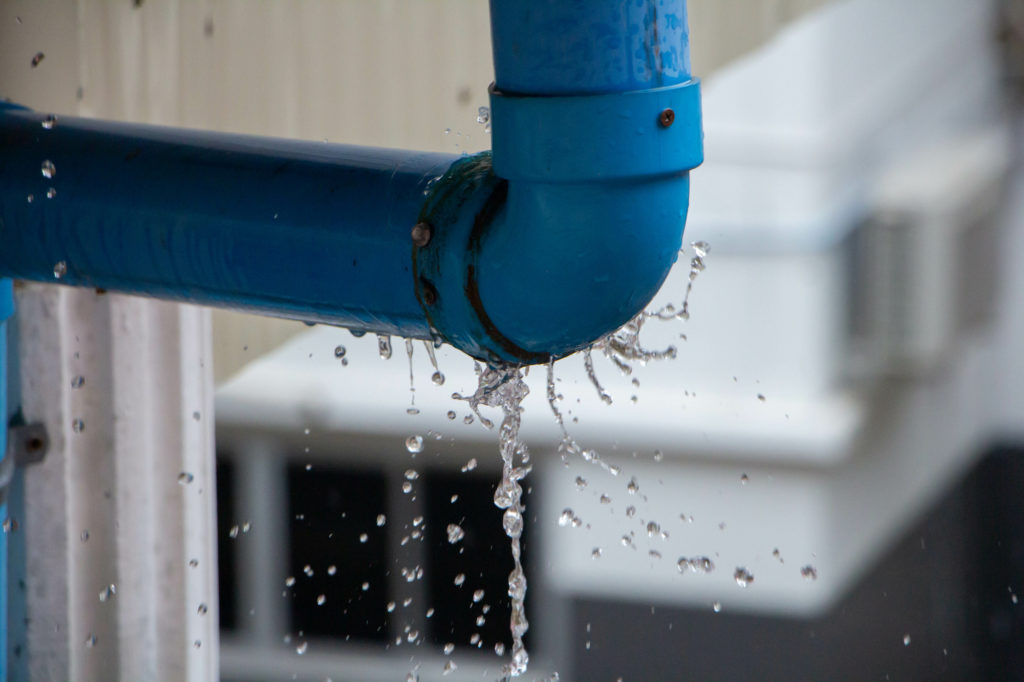
Nobody wants a leaky business. Pipe leaks, roof leaks, HVAC malfunctions, all water damage causes major headaches for management and employees. Just like any structure, commercial buildings are subject to water trespassing and leaks. Whether it’s an office building, large warehouse, or other types of commercial property, there are plenty of intrusion points that can cause an entryway for unwanted moisture. The roof is often the main structure susceptible to water damage and the culprit of compromised shelter.
If you have a commercial building or work in a large office building, what are the soft spots for water damage? Here’s what you need to know.
Water Leak Detection on Large Commercial Buildings
Commercial roofs are different from residential roofs. From design to material to required maintenance, they are very different. Commercial roofs tend to be bigger and require different types of roofing material. Commercial roofs are often flat, metal, and require membrane coverings. They will often have more HVAC units installed and have industrial piping, more skylights, etc. All of this means there are potential leak spots there as well. At the same time, a commercial building will use a lot more water than a residential home, which also increases the chances for plumbing, pipes, or something else to go wrong.
What are the Top Causes for Water Damage in Commercial Buildings?
Commercial property owners will know that damage to property needs to be addressed immediately. This is much simpler when the damage is out in the open after a heavy storm. It is the small quiet leaks, however, that often pose the bigger threat to a commercial property owner. This will vary depending on the building, but common potential trouble will be caused by:
- Heavy rain
- Flooding
- Damage to infrastructure
- Damaged plumbing
- Old and aging infrastructure
The Most Common Types of Leaks in Larger Buildings
Water damage is one of the most expensive problems for commercial property owners. Staying on top of it helps to minimize repair costs down the line. Common types of water damage experienced by property owners include:
- Roof damage. This is perhaps the most common source of many water leaks. The roof is easily damaged by bad weather, wind, or hail storms. The problem with roof damage is that it’s not always apparent where the leak is originating from. It is likely to be from damaged stripping, missing or damaged shingles, or pooling water.
- Damaged Flashing: The protective barrier that seals skylights, chimneys, or HVAC systems will often get damaged or be a source for leaks.
- Withered membrane. The membrane used to protect commercial roofs is also likely to wither if not properly maintained, exposed to extreme weather, or not initially installed correctly.
- Insufficient or clogged drainage. Flat roofs love to collect water, and many commercial roofs are flat roofs. Therefore, proper drainage is essential to ensure that water doesn’t collect and pool.
- Ceiling leaks from bathroom facilities. When there is a multi-story building or a high-rise, ceiling leaks from upstairs facilities are often common. This is due to a deteriorated membrane or sealant.
- Damage to windows or window seals. Other areas for potential water damage include the window sealant. Moisture will seep in through these places and lead to damage in the surrounding fixtures, panes, or walls. It very quickly can warp wood and create a mold situation.
- Plumbing leaks. It should be no big surprise to property owners that plumbing is on the list. Broken water supply pipes or sewer lines will often be the cause of headaches for property owners. Since pipes are tucked away behind walls or buried underground, these leaks can sometimes go undetected if they are minor. This makes regular inspection and maintenance a good call.
Basement Leaks: Another Common Culprit
Many commercial buildings have basements or subterranean ground levels. A leak in the basement can occur for many reasons including aging infrastructure, cracks in the concrete or foundation, insufficient slope or badly engineered drainage, clogged drainage, and even broken sprinkler systems leaking and sending water in wayward directions. Structural integrity is a major concern when it comes to frequent or long-standing water damage to foundational structures.
Signs That You Have a Silent Leak
Water leak detection is not always black and white. There is, what we like to call, the subtle detective work involved in finding where a point of intrusion, seal, or pipe has failed and is causing damage. These signs will clue you in to potential water damage:
- Plaster that appears to be crumbling or chipping away
- Peeling paint on walls or corners
- Any loose tiles or cracked tiles, damaged tiles may indicate there is seeping moisture
- Smell that is musty and moldy
Find the Water Leak Detectives Near You
If your commercial building is having issues with water leaks, you need water leak detectives to trace the true culprit. These leaks can be damaging, disruptive, and ultimately expensive.
If you suspect water damage, don’t wait. Call El Paso Cleaning. We can help you find and solve the problem!
